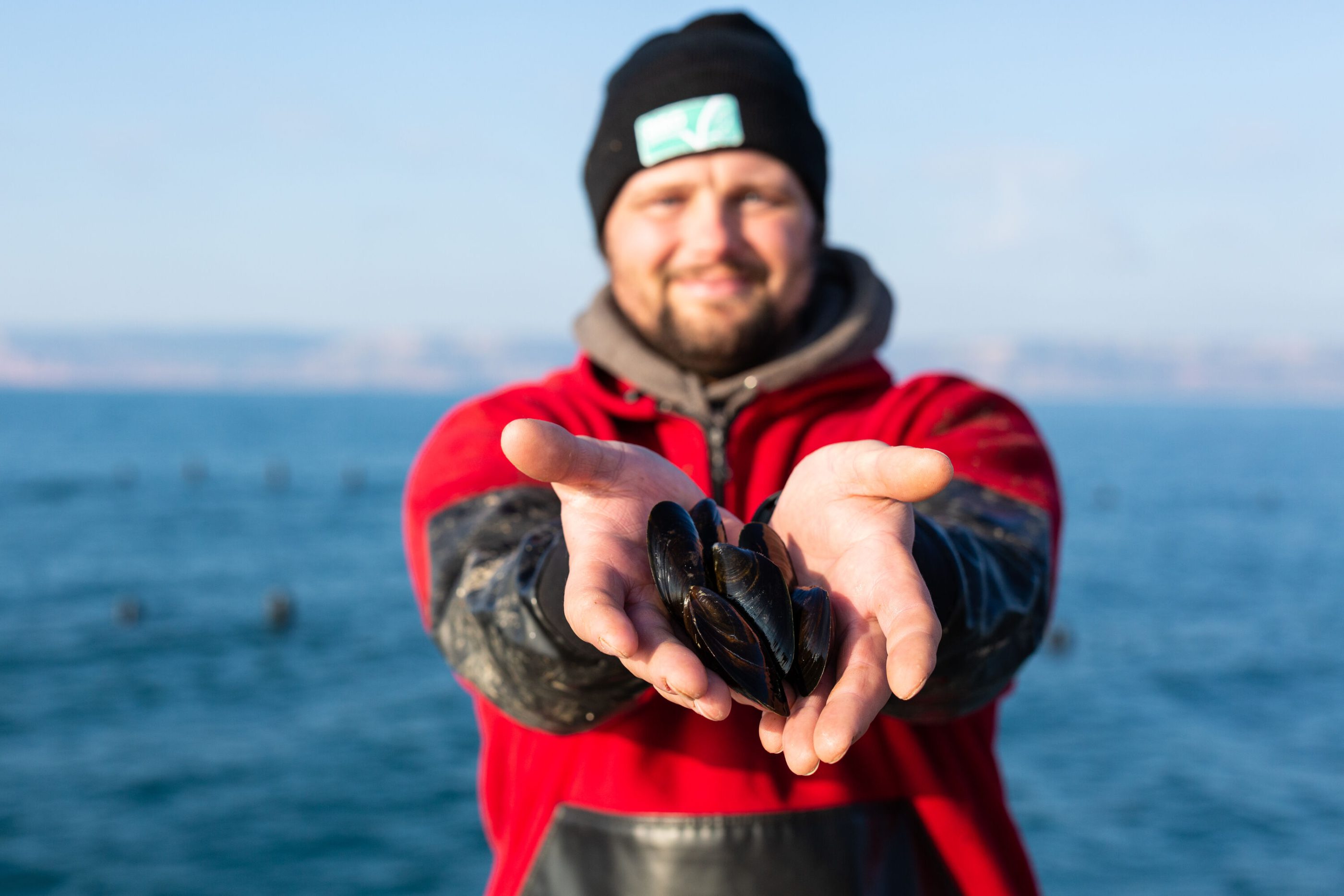
How we’re helping aquaculture lead by example on climate change
October 26, 2021
A blog by Robert Parker, ASC’s Senior Co-ordinator – Greenhouse Gas Emissions
When the United Nations Climate Change Conference (COP26) takes place in Glasgow this November, it will be the 26th meeting following the establishment of the UN Framework Convention on Climate Change at Rio de Janeiro in 1992, and after so many years real action is needed more than ever. That has been made abundantly after another year marked by extreme weather events and record-breaking temperatures around the world, and the stark warnings of this summer’s report by the Intergovernmental Panel on Climate Change (IPCC). There is no more time to wait: dramatic action to reduce greenhouse gas emissions (GHGs) is needed now if we are to avoid catastrophic damage to ecological and human systems.
The impacts of our food
It’s estimated that food systems account for between a quarter and a third of global GHGs.¹ That is similar to the combined emissions of all the world’s cars, trucks, trains, ships, and planes. And while global energy and transport sectors are undergoing technological advancements that improve efficiency and reduce their GHGs, emissions from food systems continue to increase.
Most emissions from global food systems come from the production of animal protein. While the use of fossil fuels and electricity on farms makes up part of this impact, there are even larger sources of emissions in food systems: methane from the digestive processes of ruminant animals like cows or from manure management; nitrous oxide from the use (and overuse) of chemical fertilizers to grow feed crops; and emissions associated with the clearing of land for feed crops and grazing. In fact, three quarters of the world’s agricultural land is used to feed animals rather than humans. This demand contributes to the loss of millions of hectares of forest every year along with the carbon sinks they once represented.

Knowledge is power
The farmed seafood industry needs be part of the climate change solution, and we need to start thinking of ‘responsible aquaculture’ as also meaning ‘low GHG aquaculture’. Whether it is shrimp from a pond, mussels from the coast, or trout from a lake, it’s critical that producers know their carbon footprint and can demonstrate that their products and their production systems fit in a carbon-constrained world.
Many seafood systems already have low rates of GHG emissions compared to land-based animal protein sources. Wild-caught anchovies and other small pelagic fishes and farmed bivalves are among the most GHG-efficient sources of protein globally and average emission rates across the aquaculture industry are lower than those from livestock.² For others, we can find why emissions are higher and work towards solutions to reduce them.
Aquaculture’s contribution
The aquaculture industry can make a big contribution to reducing global emissions by providing lower GHG food alternatives to land-based livestock.³ This requires not just minimizing emissions on the farm but also avoiding high emitting activities all along the product supply chain. That means looking back at the fisheries, farms, and mills that supply aquafeeds, and also looking forward to the processing, packaging, and distribution of a product on its way to a consumer’s plate, and finding climate-responsible actors all along the chain.
ASC has incorporated GHGs and climate change into our standards over the years in different ways. Our standards for salmon, seabass and seabream, flatfish, and tropical marine finfish all require reporting feed- and farm-related GHG emissions. Energy efficiency measurements and reporting are required across numerous standards. And we have restrictions on both mangrove deforestation and on the use of soy and palm aquafeed ingredients associated with deforestation.
Our plans for more action
In 2021, though, we need to go further. ASC seeks to transform aquaculture towards environmental sustainability and social responsibility and if responsible aquaculture today means low GHG aquaculture then we need to step up. We’re ready to do just that, and there’s a lot that we’re planning.
This year, I started as ASC’s first Senior Coordinator for Greenhouse Gas Emissions and began a process to consistently measure and characterize the GHG impact of aquaculture systems around the world. We are firm believers in the importance of data to tackle these big problems, which is why we ask farms to transparently report their performance, but we also think that farms deserve help with this. Our online GHG tools will support the industry with more open measuring and reporting of GHG emissions. These tools are being developed using the best methods and data available, and following best practice from scientific literature. And of course, in line with ASC’s commitment to transparency, outputs of this work will be made available so other researchers can use them too.
Consistency
We are also working to improve consistency. Our different standards were developed over a long period of time and currently include varying GHG and energy use requirements. This is something we will be changing with the launch of the aligned Farm Standard, which will cover all ASC certified species. This will ensure that all certified farms have to meet the same requirements when it comes to GHG emissions and energy usage.
When world leaders meet in Glasgow the focus will be on the large-scale political action needed to fight climate change, and rightly so. But we must also remember that fighting the climate crisis will require change in every aspect of our lives and at every level. That means every industry must change. At ASC we’re determined to help make sure the aquaculture industry is leading by example.
¹ Vermeulen et al., (2012), https://www.annualreviews.org/doi/abs/10.1146/annurev-environ-020411-130608; Crippa et al., (2021), https://www.nature.com/articles/s43016-021-00225-9
² Gephart et al., (2021), https://www.nature.com/articles/s41586-021-03889-2; , Poore and Nemecek (2018), https://www.science.org/doi/10.1126/science.aaq0216
³ Hoegh-Guldberg et al., (2019), WRI https://dev-oceanpanel.pantheonsite.io/sites/default/files/2019-09/19_HLP_Report_Ocean_Solution_Climate_Change_final.pdf



